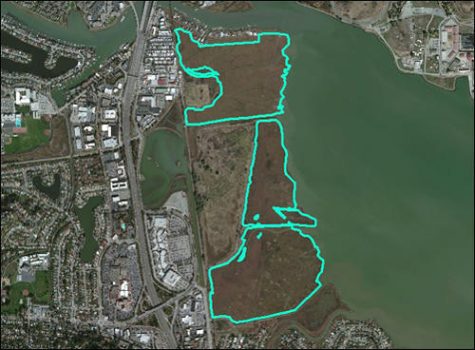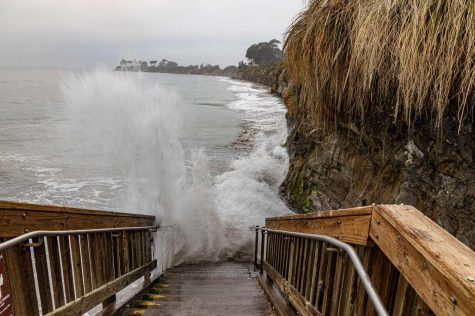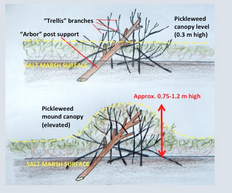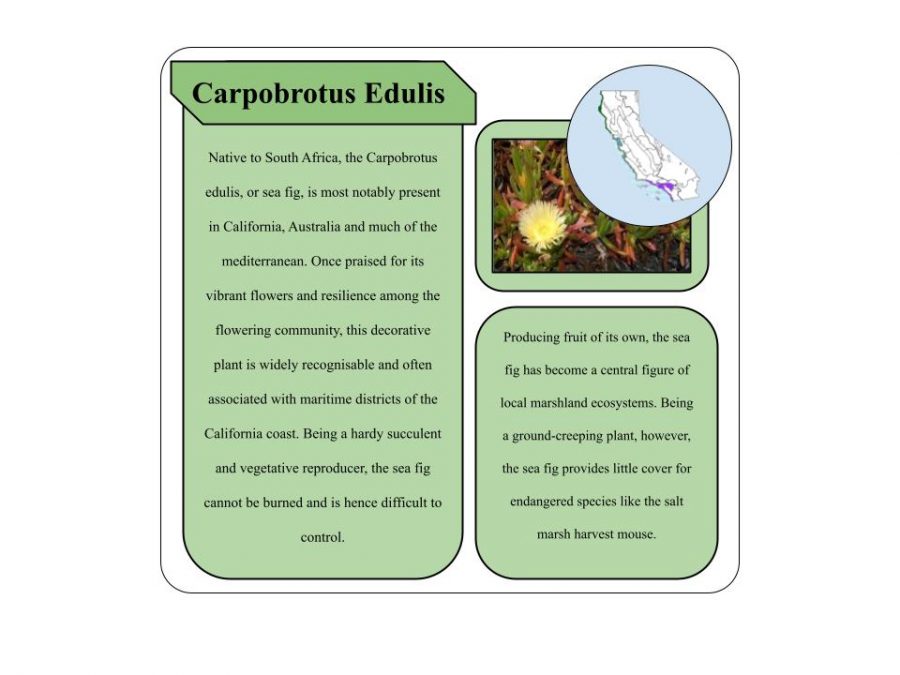Why we can’t just stop at Earth Day
July 10, 2021
In just over 60 years, the Marin Audubon Society has purchased nearly 500 acres of now protected land in the Bay Area. Funded by federal, state and private grants, its most well-known restoration projects include the Triangle Marsh in Corte Madera, Petaluma Marsh, Bahia in Novato, Corte Madera Ecological Reserve and Tiscornia Marsh in San Rafael.

Corte Madera Ecological Reserve’s volunteer coordinator Martha Jarocki, who witnessed the site’s three-year transformation, said that marsh restoration is an incredible and relatively hands-off process.
“The amazing thing about marshland is that if you open up the land to the tidal flow, the seeds and
the flowers come in on their own. So do the little critters in the mud, the worms, the mussels and whatever else … all we had to do is take the land down to an appropriate level that engineers determined would allow for a natural marsh. And if
you go [to the reserve now], you will see that that’s been spectacularly true,” said Jarocki.
According to Jarocki, it is enhancement and management that have made projects like the Corte Madera Ecological Reserve successful. Enhancement, when volunteers replant native species to revitalize the marsh, occurs in the first year. It then takes sustained efforts over several years to keep invasive species under control and plants healthy during summer droughts.
“We need to care for the native plants because they generally grow a lot slower than some invasive plants [from other parts of the world] that love to grow in California. Our job now is to support the natives and cut back the invasives when they get too big or are taking too much water,” said Jarocki.
This year, the Marin Audubon society has been particularly concerned about water, said Jarocki, and this is just one of the harmful effects of climate change.
Education Outreach Coordinator from the San Francisco State University Estuary and Ocean Science Center Erin Blackwood said that another unsurprising, but often underappreciated, impact of climate change is sea level rise, which poses one of the biggest long term threats to biodiversity, endangered species, and the sustainability of local Marshland.

According to Blackwood, a study called The King Tides Project (KTP) that measures and photographs especially high winter tides has become an interesting resource for environmental scientists and the general public interested in learning about what normal high tide may look like in the future. And for anyone who’s ever seen king tides, Blackwood said, this should be concerning.
Redwood Advanced Placement (AP) Environmental science teacher Mitch Cohen has had a number of students who participated in the King Tides Project who photographed the frequently flooded regions of Manzanita and Mill Valley. When asked about the importance of the project, Cohen said that “people just don’t realize that a couple inches make a difference at high tide [because] when you throw a rainstorm on top of that, and some south winds [during King Tide,] everything is exaggerated.”
Asked the same question, Blackwood said that public studies like the KTP are part of the reason why Estuary and Ocean Center (EO center) laboratories have been building something called arbors, which act much like trellises that threatened plants like pickleweed can climb in order to remain above the water level.

“It’s our hope that [endangered species] like the salt marsh harvest mouse can use these arbors to seek refuge from sea level rise,” said Blackwood.
When asked about this new study, Jarocki said that while artificial interventions like arbors have potential, she’d prefer that the Audubon continue using more conventional means to combat the challenges of rising tides.
“If you can make a healthy marsh and you can build some refuge areas behind it, you can protect against floods,” said Jarocki. “As the water rises, those refuge areas go from being a high high grass area to [an area with] more salt tolerant plants and then eventually to marsh.”
But according to Cohen, conventional projects don’t come without their faults. For one, waves produced from ferries have been known to erode a lot of the marshes, including the Corte Madera Ecological Reserve. And this isn’t the only trouble the Audubon society has faced during its restoration efforts in the reserve.
Another challenge to larger marshland restoration projects is maintenance and a lack of control, this was brought up by Jarocki herself, who in reflecting on an incident that occurred early in the restoration process, said that “what we thought was just one mound of nice looking grass was covered with something called bristly oxtongue, which is an invasive plant that soon completely overran the site … a month later.”
Invasive plants like the bristly oxtongue pose arguably the biggest threat to biodiversity and endangered species like the salt marsh harvest mouse ridgeway rail, which just happens to be the Marin Audubon’s logo, said Jarocki.
At this time of year, volunteer groups in the Corte Madera Ecological Reserve focus primarily on clearing invasive species.
“In the winter we’re planting, but this time of year we’re mostly cutting or trying to pull or dig plants that are invasive plants, and hand watering depending on how dry it is,” said 76 year old Jarocki, who was clear to emphasize that “we love high school students because they are full of energy and a lot of us [at Audubon] are gray haired, and sort of arthritic.”
If students are interested in volunteering, Jarocki said that Marin Audubon offers a monthly work day on the second Saturday of every month.
“When you do something for the ecology of your area, you come to appreciate its diversity [and] love the species that live there [while] it’s difficult work, [volunteering] is one of my greatest joys,” Jarocki said.
Offering a similar story, Cohen concluded by saying that the Bay Area is in particular need for Marsh restoration, with human activity accounting “95 percent loss of crucial habitat,” in San Francisco bay.
This loss of habitat was reaffirmed by The United States Geological Survey (USGS) that said when compared to federal data from 1850, “only 125 square kilometers of united marshes remain of the original 2,200 square kilometers.”
While significant damage to our local ecosystems has already been done, said Blackwood, restoration projects, volunteering, and further funding will help to restore biodiversity.
“It’s one of the reasons why we can’t just stop at Earth Day,” she said.
The following graphics include more information on native species like the salt marsh harvest mouse, pickled, and red-shouldered hawk in the Bay Area.








